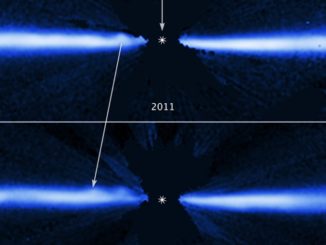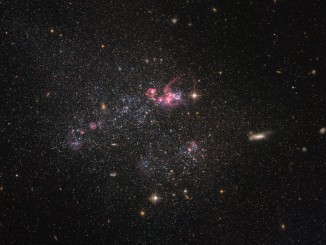The “Black Eye” galaxy, also known as M64 and more officially as NGC 4826, stands out because of a dark band of dusty debris that spreads out across one side of a brilliant nucleus. The gas in the non-stellar outer reaches rotates in the opposite direction from gas in the inner regions, possibly suggesting a merger with a gas-rich galaxy in the distant past. New stars are forming where the counter-rotating gas collides. Discovered by English astronomer Edward Pigott in 1779, NGC 4826 is located some 17 million light years from Earth in the constellation Coma Berenices and is a familiar target for amateur astronomers. This spectacular view was captured by the Hubble Space Telescope.




